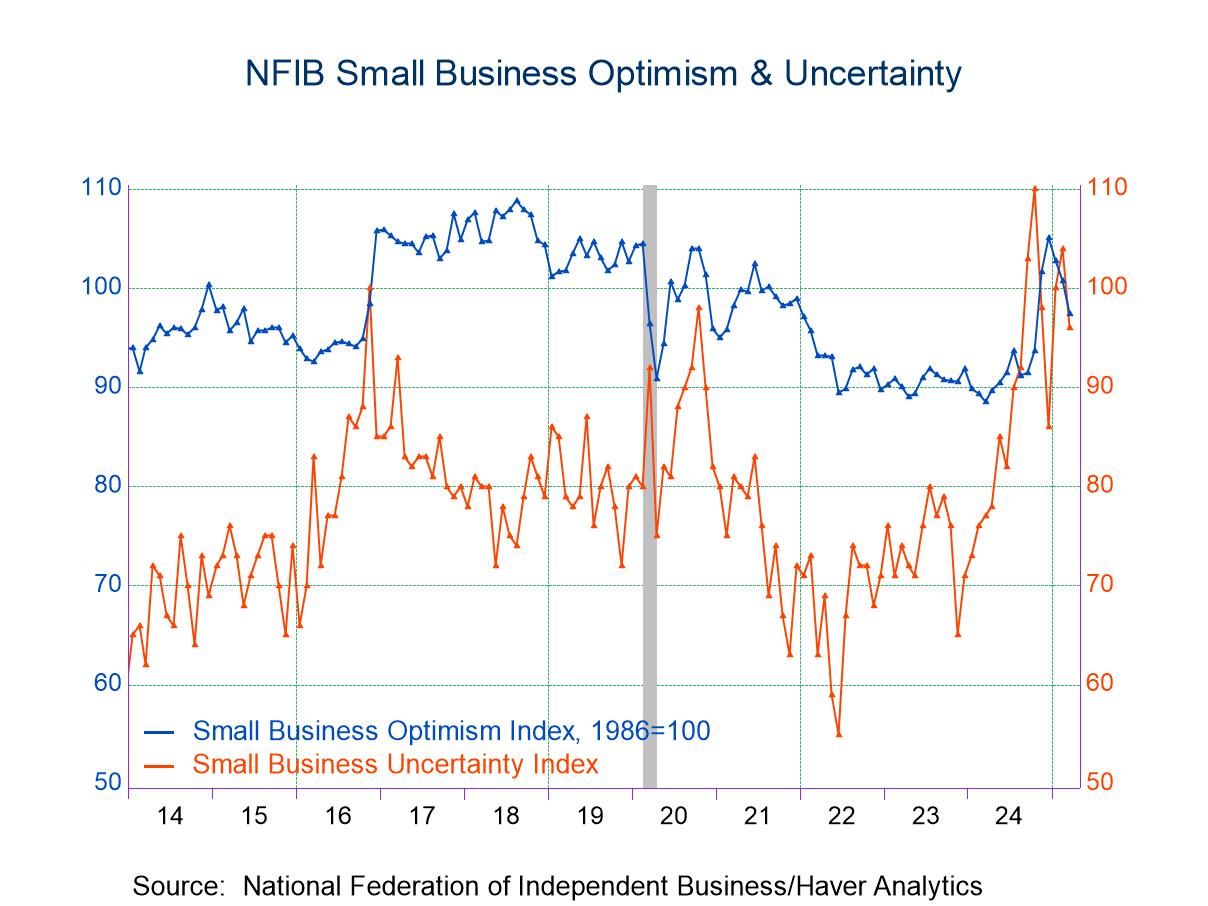U.S. Employment Costs Index Moderates Noticeably in Q4
Summary
- ECI up 0.9% in Q4, least since mid-2021.
- Wages & salaries also up 0.9%, noticeably less than 1.2% in Q3.
- Goods-producing industries compensation up 1.0% in Q4; service-producing industries compensation 0.9%.


The quarterly advance in the employment cost index for civilian workers (ECI) slowed in Q4 to 0.9%, seasonally adjusted, from 1.1% in Q3. The Action Economics Forecast Survey expected a 1% increase in Q4. Year-on-year, the ECI was up 4.2% in Q4 not seasonally adjusted, down slightly from 4.3% in Q3 and the lowest since 4.0% in Q4 2021.
Wages and salaries for civilian workers also grew 0.9% in Q4; this was down from 1.2% in Q3, which was unrevised. The Q4/Q4 increase was 4.3% not seasonally adjusted, down from 4.6% in Q3 and the lowest since 4.2% in Q3 2021. Benefits rose 0.7% seasonally adjusted in Q4, following 0.9% in Q3 and the lowest since 0.4% in Q2 2021. The Q4/Q4 advance in benefit costs was 3.8%, down from 4.1% in Q3 and the lowest since 2.8% in Q4 2021.
Private industry workers also saw a 0.9% rise in compensation, seasonally adjusted, marginally less than the 1.0% in Q3 and the smallest increase since 0.7% in Q2 2021. Q4 over Q4, the increase was 4.1%, not seasonally adjusted, less than the 4.3% in Q3 and the lowest since Q3 2021. Wages and salaries for private sector workers also rose 0.9% in Q4, down from 1.1% in Q3; they were up 4.3% in Q4, slightly less than the 4.5% in Q3 and the least since 3.5% in Q2 2021. Private industry workers’ benefits were up 0.6% in Q4, following 0.8% in Q3 and the smallest increase since 0.4% in Q2 2021. The Q4/Q4 increase in benefits for private sector workers was 3.6% after 3.9% in Q3 and the lowest since 2.9% in Q4 2021.
By industry, workers in goods-producing industries saw compensation increase 1.0% seasonally adjusted in Q4 after 0.8% in Q3. The Q4/Q4 amount not seasonally adjusted was 3.9%, up from a year-over-year amount of 3.8% in Q3. In service-producing industries, workers saw compensation increase 0.9% in Q4, down from 1.1% in Q3; their Q4/Q4 increase was 4.2%, down from 4.5% in Q3 and the lowest 4-quarter increase since 4.1% in Q4, 2021.
The employment cost index measures the change in the cost of labor, free from the influence of employment shifts, across occupations and industries. It is provided by the Bureau of Labor Statistics and is available in Haver’s USECON database. Consensus estimates from the Action Economics Forecast Survey are in Haver’s AS1REPNA database.


Carol Stone, CBE
AuthorMore in Author Profile »Carol Stone, CBE came to Haver Analytics in 2003 following more than 35 years as a financial market economist at major Wall Street financial institutions, most especially Merrill Lynch and Nomura Securities. She has broad experience in analysis and forecasting of flow-of-funds accounts, the federal budget and Federal Reserve operations. At Nomura Securites, among other duties, she developed various indicator forecasting tools and edited a daily global publication produced in London and New York for readers in Tokyo. At Haver Analytics, Carol is a member of the Research Department, aiding database managers with research and documentation efforts, as well as posting commentary on select economic reports. In addition, she conducts Ways-of-the-World, a blog on economic issues for an Episcopal-Church-affiliated website, The Geranium Farm. During her career, Carol served as an officer of the Money Marketeers and the Downtown Economists Club. She has a PhD from NYU's Stern School of Business. She lives in Brooklyn, New York, and has a weekend home on Long Island.





